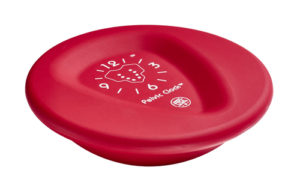
 table.
table.
More Articles:
Improve your health
Before surgery for many pain problems the first step includes taking over-the-counter pain relievers. Acetaminophen and non-steroidal anti-inflammatory drugs (NSAIDs) such as ibuprofen and naproxen are over the counter options. But watch out, these medications have a variety of side effects, so it’s important to understand the risks with when considering long-term use for chronic conditions such as osteoarthritis and arthritis.

 table.
table.
More Articles:

 Foam rolling has been shown to help increase joint mobility and range of motion, as well as aid in performance and recovery according to a 2015 study in the International Journal of Sports Physical Therapy. “This [foam roller] move helps release tension and relieve pain by realigning and massaging the shoulder blades, aligning the neck, and opening up the upper body,” Roxburgh says.
Foam rolling has been shown to help increase joint mobility and range of motion, as well as aid in performance and recovery according to a 2015 study in the International Journal of Sports Physical Therapy. “This [foam roller] move helps release tension and relieve pain by realigning and massaging the shoulder blades, aligning the neck, and opening up the upper body,” Roxburgh says.The Causes of Tennis Muscle Strains & Pelvic Clock Exercises to eliminate it
Tennis is a series of constant, frequent and sudden lower spine rotations, which can trigger acute and chronic lower back aches and injuries. This high-impact and physically intensive game cause a great deal of strain on the lower back and hip muscles, mainly when you abruptly stop and change your direction to charge towards the ball.
Tennis is an intensive game that is particularly dangerous for individuals who suffer from impaired spinal flexibility and mobility, primarily in the lumbar spine. Lower back pain commonly occurs amongst tennis players who suffer from muscle dysfunction, articular lower back dysfunction, or postural problems.
In most cases, the combined and frequent movements of extending, flexing and rotating the spine tend to trigger the low back pain due to high lateral flexion forces. A powerful serve, if made repetitively, can cause severe strain on the back, and hyperextensions of the lower back can cause the lumbar spinal discs to compress, causing harm to the muscles, tendons and ligaments surrounding the spine.
Repetitive, great serving places high stress on the back and may result in injury. The serve hyper-extends the lower back and can compress lumbar discs. This can stress the small joints in the spinal structures as well as the muscles, ligaments, and tendons around the spine.
Pelvic Clock Exercises to Eliminate Tennis Back Pain
The pelvis clock aids in targeting specific hard-to-reach muscles in the lower back and pelvic region to promote greater hip mobility and core strength.
Let’s take a look at some moves to counter lower back pain and injuries:
An excellent step for hip and shoulder alignment, it will help you stretch out the aching muscles and build up their flexibility. You begin by placing the pelvic clock in position and extending both, your arms and legs, towards the left. Grab your right wrist with your left hand, and stretch your right arm towards the left. Tilt your pelvis towards the right and hold this pose for at least 30 minutes. Be sure to repeat this move five times before you switch sides.
This powerful move is amazingly beneficial to engage both, the hip and lower back muscles. You begin by lying down flat and stretching out arms and legs in a relaxing position. Now, start rocking your pelvis from side to side, with the pelvic clock placed beneath your pelvis to intensify the stretch.
Additional Articles:
While nearly half of healthy, active people over age 60 experience lower back pain, such flare-ups aren’t a feature of aging. Every day, seemingly unconscious habits can trigger the pain.
The more you sit the more pressure you put on the cushioned discs between the bones in your back. But that doesn’t mean you’re doomed if you have a desk job. Throughout the day, get up and walk around. This will squeeze fluid out of your discs, helping to head off pain. If you can afford it, consider investing in a sit-stand desk. People with chronic low back pain reduced their self-rated pain by 50 percent using a sit-stand desk and taking movement breaks.
Throughout the day, get up and walk around. This will squeeze fluid out of your discs, helping to head off pain. If you can afford it, consider investing in a sit-stand desk. People with chronic low back pain reduced their self-rated pain by 50 percent using a sit-stand desk and taking movement breaks.
If you keep a stiff upper lip, your back may pay for it.  People who shut down during a fight with their partner are at higher risk of developing back pain, according to a 2016 study published in the journal Emotion. One reason may be that those who are upset or anxious are more likely to tense back muscles. People with chronic back pain who participated in a combination of mindfulness meditation and yoga for eight weeks reported significant improvements in back pain.
People who shut down during a fight with their partner are at higher risk of developing back pain, according to a 2016 study published in the journal Emotion. One reason may be that those who are upset or anxious are more likely to tense back muscles. People with chronic back pain who participated in a combination of mindfulness meditation and yoga for eight weeks reported significant improvements in back pain.
A medium firm mattress, as opposed to a very firm mattress, appears to be best for your back, according to a 2015 review published in the medical journal Sleep Health. But perhaps even more important than the firmness of your mattress is how old it is. When a mattress is past its prime, it may become soft and lumpy, which can cause your back to contort as it tries to adjust to sinking in, says Press. Experts recommend changing your mattress as often as every seven years, and immediately if it’s showing signs of wear such as sagging or holes.
There’s some thought that an anti-inflammatory diet — one that’s rich in fruits, vegetables, lean protein such as fish and chicken, and healthy fats such as nuts and olive oil — may help tamp down inflammation in the body that can worsen chronic pain, including back pain, Press says. But eating this sort of healthy fare may also reduce your back pain simply because it can lead to weight loss. “Even losing just five pounds can take a load off your spine,” Press explains. Indeed, studies have found that those with a high BMI (body mass index) have a higher risk of developing back pain.
Anytime you slouch or stoop, your back muscles and ligaments strain to keep you balanced, which can cause stress on the back.  When standing, make sure your shoulders are back, your stomach is pulled in, and your feet are about shoulder-width apart. If you have to stand for a while, shift your body weight from your toes to your heels (or vice versa) and/or from foot to foot. When sitting, keep your feet flat on the floor, with your thighs parallel to them, legs uncrossed. If your chair can’t support your lower back, place a small pillow behind it. Not sure you’re doing it correctly? Check your side view in a mirror, or consider seeing a physical therapist or occupational therapist for a consult.
When standing, make sure your shoulders are back, your stomach is pulled in, and your feet are about shoulder-width apart. If you have to stand for a while, shift your body weight from your toes to your heels (or vice versa) and/or from foot to foot. When sitting, keep your feet flat on the floor, with your thighs parallel to them, legs uncrossed. If your chair can’t support your lower back, place a small pillow behind it. Not sure you’re doing it correctly? Check your side view in a mirror, or consider seeing a physical therapist or occupational therapist for a consult.
Even those in decent physical shape, just the twisting and turning involved in certain activities like golf can cause back strain. Your spine and back muscles are less forgiving than when you were younger, so you need to make sure your body is prepared for the load put on it. Whether you're headed for a golf, tennis or yoga outing, fit in some practice time a few weeks ahead.
The pelvis clock aids in targeting specific hard-to-reach muscles in the lower back and pelvic region to promote greater hip mobility and core strength.Pelvic Clock® exercise device www.pelvicclock.com is a stretching aid for hip and lower back pain relief.

Let’s take a look at some moves to counter lower back pain and injuries:
An excellent move for hip and shoulder alignment, it will help you stretch out the aching muscles and build up their flexibility. You begin by placing the pelvic clock in position and extending both, your arms and legs, towards the left. Grab your right wrist with your left hand, and stretch your right arm towards the left. Tilt your pelvis towards the right and hold this pose for at least 30 minutes. Be sure to repeat this move 5 times before you switch sides.
This powerful move is amazingly beneficial to engage both, the hip and lower back muscles. You begin by lying down flat, and stretching out arms and legs in a relaxing position. Now, start rocking your pelvis from side to side, with the pelvic clock placed beneath your pelvic to intensify the stretch.
With rather simple changes in your daily routine, you can move forward with less back pain. Thanks for visiting.
Other back pain articles:
Are you facing a conundrum in choosing a surgery or going ahead with life by managing pain in some way or the other?
Surgeries are a scare, there are no two thoughts about it. Going under the knife and giving control to someone else to mend & amend any part of your body while you are kept in deep slumber is definitely a trigger for panic attack. And it is totally understandable if you are looking for options to deviate from the surgery (even if your distraction is temporary) and in the hunt to find something more constructive and less scary. Please note, I include affiliate links within this post to support the maintenance and development of this site.
With the evolution in technology and advancements in the world of health & fitness, many non-medical solutions have surfaced over the years which are helping thousands of people around the globe achieve optimum levels of health without going through a dozen surgical procedures et cetera. One of such innovations is the ‘Pelvic Clock’.
A pelvic clock helps keep your spinal and pelvic health in check. With its range of exercises from basic to expert, this device helps in maintaining the strength of the pelvic floor which in turn keeps the spine in good shape.
If your doctor has advised a lower back surgery for you to eliminate some sort of pain, do check with him again and consider the option of pelvic floor exercises with the help of a pelvic clock. In case his answer is affirmative, you are all set to step into a new journey of fitness by incorporating simple exercise routines in your daily life.

The pelvic clock will ensure that your pain is managed by working on your muscles to relax, soothe, stretch and strengthen them, slowly but surely. With or without a surgery, this regimen will teach you how to work on your muscles in the best possible way to minimize pain and maximize comfort. Without an understanding of your muscles, you are prone to injuring yourself and causing needless discomfort. The pelvic clock will teach you how to manage your pain.
Unlike surgery, the pelvic clock is not a permanent change in your body or lifestyle. It does not omit or add anything to your life that cannot be reversed. In case you worked with the pelvic clock and felt some discomfort, you can always get yourself back on the mat and work towards fixing your posture which caused the discomfort in the first place. With surgeries, there is hardly any hope to get back what has been taken away. A temporary but reversible solution is a better choice.
With a pelvic clock, you save time and you save money! You don’t have to pay an arm and a leg to get the device neither do you have to spend time recovering. Instead, you get two solutions for the price of one!
More articles from Rick Touchstone
Any kind of pain in the body can immensely reduce the quality of life. From a headache to an injury or a mere stressed muscle, any form of pain compromises daily functions; rendering you unable to perform day to day activities. One of the most discomforting pains of all times is the one you have on your lower back. This post contains affiliate links and I will be compensated if you make a purchase after clicking on my links. Thanks to modern age and changing times which have left a majority of us

sitting on our seats for over 6 hours a day, lower back pain has become insanely common. However, the reason for this pain can emerge from something as simple as a weak pelvic floor. By a weak pelvic floor, we mean that the muscles of your pelvis are not strong enough and become painful at the sight of constant stress.
With the regular use of the pelvic clock, you will see that your tightened muscles have loosened, you are more flexible, your muscles are strengthened and the overall stabilization of your spine is evident.
The pelvic clock device was invented by a former Olympics coach who had closely witnessed lower back problems in athletes and sportsmen. The pelvic clock is a little device you place under your back and with its help, you move your pelvic floor in a clockwise movement that stretches, relaxes and strengthens your lower back muscles. While this exercise can be performed without a pelvic clock, this clock actually helps to control the movement, in case you perform an incorrect movement and hurt yourself. Pelvic Clock® exercise device www.pelvicclock.com is a stretching aid for hip and lower back pain relief.
You don’t need to be an expert, simply follow the instructions and wait for the wonders to happen!
Your body’s pelvic floor is the seat of your skeleton. It is the base which holds your upper body and lower body together and maintains a good balance, from top to bottom. Not many of us realize how important it is to take care of our pelvic floor and how it helps us conduct our daily motor functions with utmost ease and comfort. Small changes in our routines can build up the pelvic muscles resulting in improved efficiency and optimized health.
You run to lose weight. You pick weights to build muscle. You will do all sorts of things that focus on your major goals but when you are weak internally, you attract injuries and weaknesses like magnets attracts metal.
However, here’s the good news! You don’t need lengthy diet plans or exhaustive lists of exercises to keep you fit and healthy, you can take care of your internal muscles by making smaller exercises a part of your daily routine.
For your pelvic muscles, there is a simple routine that can strengthen your pelvic floor and provide optimum support to your back and spine. This exercise is called the Pelvic Clock. Not only is this a good exercise, there is also a small device that can help you immensely in performing this exercise without doing it wrong and causing any harm. Pelvic Clock® exercise device www.pelvicclock.com is a stretching aid for hip and lower back pain relief.
More about The Pelvic Clock®
Why use the pelvic clock exercise device
Lower back pain is often caused by a muscular imbalance. In the normal course of our daily lives, half of our core muscles are unused, and others are stiff from overexertion / overuse.
Try these core strengthening exercises for lower back pain before back surgery with a Pelvic Clock®. Almost everyone can benefit from using a Pelvic Clock, and I have great story to share. Please note that I do not receive this product or any others in exchange for this article, I do get a small commission for readers that click the buy now links. This commission helps differ the cost of hosting this blog and I sincerely hope this article helps you with your back pain.
These core strengthening exercises for lower back pain with a Pelvic Clock may help you avoid back surgery. This will help greatly for non-athletes, and is especially helpful for those participating in golf, cycling, running or tennis. Anyone suffering from lower back pain could benefit from a Pelvic Clock. Officially, the Pelvic Clock is recommended for the following conditions: sedentary lifestyle, lumbar spinal stenosis, sciatica, sacroiliac joint dysfunction, piriformis syndrome, hip pain, pregnancy back pain, and postpartum rehabilitation. Pelvic Clock® exercise device www.pelvicclock.com is a stretching aid for hip and lower back pain relief.
 All injury is different so your results will be dependent on your condition. If the pain is new and recently developed, you could feel relief the same day. Chronic pain suffers will need a bit more time to finally get relief. In some cases you will need to work through the pain to rid it completely. If you feel pain while doing the workouts you should start with small movements. Over time try to gradually increase your range of movement. Know your limits and get comfortable pushing yourself each time you workout.
All injury is different so your results will be dependent on your condition. If the pain is new and recently developed, you could feel relief the same day. Chronic pain suffers will need a bit more time to finally get relief. In some cases you will need to work through the pain to rid it completely. If you feel pain while doing the workouts you should start with small movements. Over time try to gradually increase your range of movement. Know your limits and get comfortable pushing yourself each time you workout.
The Pelvic Clock Device is brilliant for those of us with unstable pelvises and back pain.
If you’re suffering from back pain, you are not alone. And you don’t have to continue to suffer or go through a complicated surgery. Back pain, which can range from a dull, constant ache to a sudden, sharp sensation that leaves the person unable to move, can begin abruptly as a result of an accident or by lifting something heavy. Or it can develop over time due to changes in the spine as we age. A sedentary lifestyle can also lead to low back pain.
The magnitude of this issue is only growing. The Pelvic Clock is a small rubber dome. When used as designed, your sacrum is supported in the device. These core strengthening exercises for lower back pain are simple – extension, side to side, and pelvic circles, followed by some stretching.
The first time I did the basic series for core strengthening exercises for lower back pain, I was shocked and by the next day felt 80% better. I was able to stop seeing the chiropractor, and thus saving with just one visit the cost of the Pelvic Clock.
The Pelvic Clock Device can be used for the pelvis in supine, sitting, and standing positions. It can also help the upper back, shoulder girdle, and feet. In addition, there are several standing exercises that will help with balance and stability, including lunge and squat variations.
Because you can use it standing, it is safe for pregnant women and for folks who cannot get up and down from the floor. It can also be used in bed.
Note that to really be effective, you need to do the exercises daily for a while. But at least they take 10 minutes at home, versus going out to a PT or chiropractic session.
I saw immediately where this device could be used in Pilates – the Corkscrew exercise being an obvious choice.
I highly recommend this device to Pilates teachers and personal trainers, both for your own back and your clients.
•Invented by a former Olympic coach | Made in the USA
•Prevents and relieves chronic back pain
•Quickly stretches tight hip flexor muscles
•Strengthens deep core muscles
•Improves hip & sacroiliac alignment